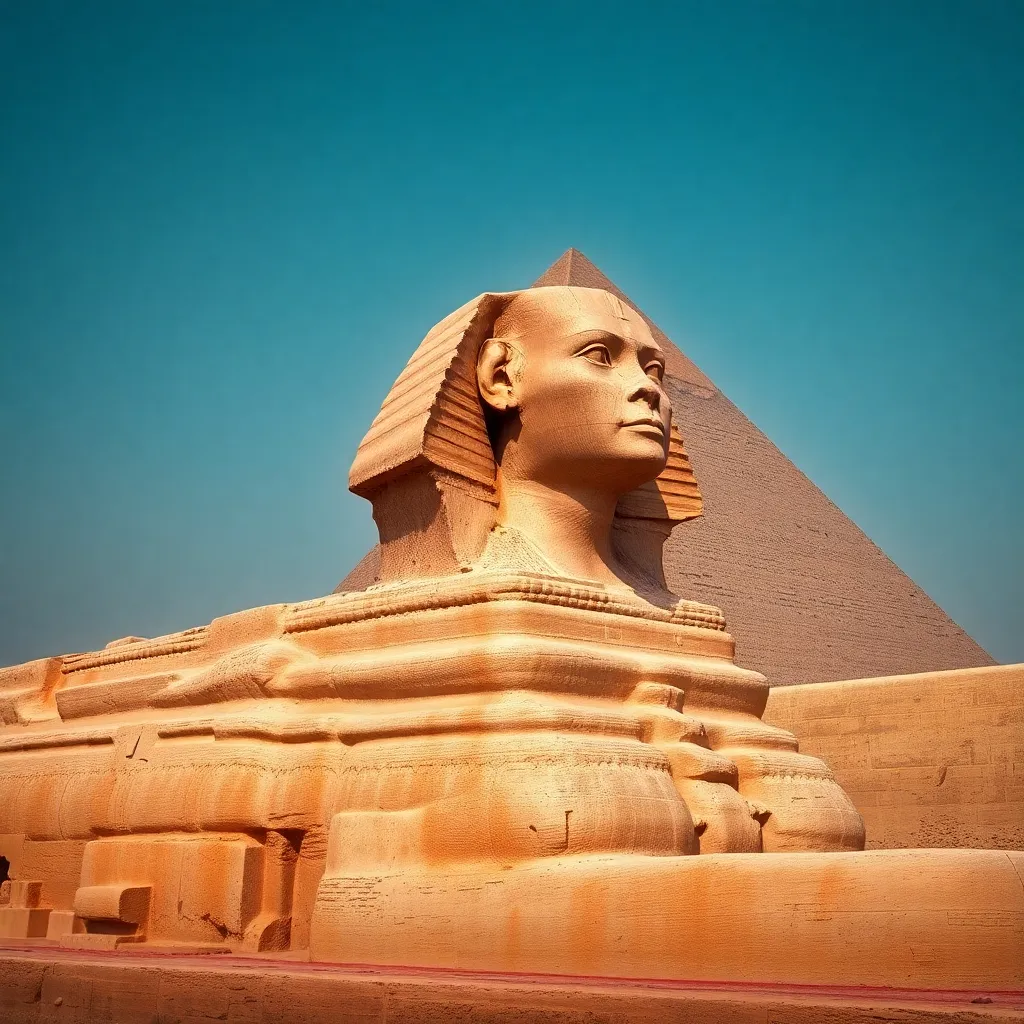The Sphinx’s Connection to the Nile: Myths and Legends
I. Introduction
The Great Sphinx of Giza is one of the most iconic symbols of ancient Egypt, a marvel of engineering and artistry that has fascinated historians and tourists alike for centuries. This colossal statue, with the body of a lion and the head of a pharaoh, represents the power and mystery of ancient Egyptian culture. In conjunction with this, the Nile River has played a pivotal role in shaping Egyptian civilization and mythology. This article aims to explore the intertwined myths and legends linking the Sphinx to the Nile, revealing how these two monumental aspects of ancient Egypt complement and enhance one another.
II. The Sphinx: An Icon of Ancient Egypt
The Great Sphinx of Giza, located on the Giza plateau near the pyramids, is one of the largest and oldest statues in the world. With a length of approximately 73 meters (240 feet) and a height of 20 meters (66 feet), it is a breathtaking sight that commands respect and awe.
Historically, the Sphinx is believed to have been constructed during the reign of Pharaoh Khafre (c. 2570 BC) as a guardian of the Giza necropolis. Its purpose was likely to protect the pharaoh’s tomb and to serve as a representation of the pharaoh’s divine power. Symbolically, the Sphinx embodies strength, wisdom, and the connection between the earthly and the divine.
III. The Nile River: Lifeblood of Ancient Egypt
The Nile River is often referred to as the lifeblood of ancient Egypt. Flowing over 6,650 kilometers (4,130 miles), it is the longest river in the world. Its annual floods deposited nutrient-rich silt along its banks, making the surrounding land fertile and suitable for agriculture, which was the cornerstone of Egyptian civilization.
In Egyptian mythology, the Nile was personified by the god Hapi, symbolizing fertility and abundance. The river was seen as a divine gift that provided sustenance and life to the people of Egypt. Key elements of its mythological significance include:
- Fertility: The annual flooding of the Nile brought fertility to the land, allowing crops to flourish.
- Life: The Nile was considered essential for survival, providing water for drinking, irrigation, and transportation.
- Mythology: Numerous myths revolve around the Nile, including stories of gods who governed its waters and cycles.
The connection between the Nile and monumental structures, including the Sphinx, is profound. Many temples and pyramids were strategically built near the river, emphasizing the significance of water in both life and death in ancient Egyptian beliefs.
IV. Myths Surrounding the Sphinx
Throughout Egyptian folklore, the Sphinx has been a figure of intrigue and reverence. Various legends describe the Sphinx as a guardian of sacred knowledge and a protector of the pharaohs. Some notable myths include:
- Guardian of the Tomb: The Sphinx was believed to watch over the tombs of pharaohs, ensuring that they were protected from intruders.
- Riddles and Challenges: In later Greek mythology, the Sphinx is known for posing riddles to travelers, a metaphor for the challenges of life and knowledge.
- Afterlife Beliefs: The Sphinx played a role in afterlife beliefs, symbolizing the transition from the earthly realm to the divine.
V. The Sphinx and the Nile: Symbolic Connections
The geographical alignment of the Sphinx with the Nile and celestial bodies suggests a deep symbolic connection. The Sphinx faces directly east, where the sun rises, symbolizing rebirth and renewal—a theme echoed in the cycles of the Nile.
Interpretations of the Sphinx also suggest that it represents the power of the Nile. The flowing river was seen as a source of life and a metaphor for the pharaoh’s strength and divinity. Furthermore, the proximity of the Sphinx to nearby temples and mortuary complexes illustrates the importance of the Nile in religious and funerary practices.
VI. Comparative Myths: The Sphinx and Other Cultures
Across various cultures, mythical creatures akin to the Sphinx embody similar themes of guardianship and wisdom. For instance:
- Greek Sphinx: In Greek mythology, the Sphinx poses riddles to travelers, symbolizing the quest for knowledge and understanding.
- Chimeras: In other mythologies, creatures with combined features represent the blending of different aspects of nature and humanity.
- River Myths: Other cultures have river deities that protect and govern the waters, similar to how the Sphinx guards the land.
VII. Modern Interpretations and Cultural Impact
In contemporary literature and art, the Sphinx continues to be a source of inspiration, symbolizing mystery and the ancient world. The myths surrounding the Sphinx and the Nile have significantly impacted modern Egyptian identity, reinforcing a sense of pride in their rich cultural heritage.
Recent archaeological discoveries have further illuminated the connections between the Sphinx and the Nile. Excavations near the Giza plateau have unearthed artifacts and structures that highlight the historical significance of this region and its relationship with the river.
VIII. Conclusion
In summary, the Sphinx’s significance in relation to the Nile is profound and multifaceted. These two iconic symbols of ancient Egypt embody the civilization’s values, beliefs, and relationship with the natural world. The enduring legacy of the myths surrounding the Sphinx and the Nile continues to resonate today, offering insights into the cultural and historical importance of these elements in understanding ancient Egypt.
Reflecting on their interconnectedness sheds light on the greater narrative of human civilization and our innate desire to understand the mysteries of life, death, and the divine.




